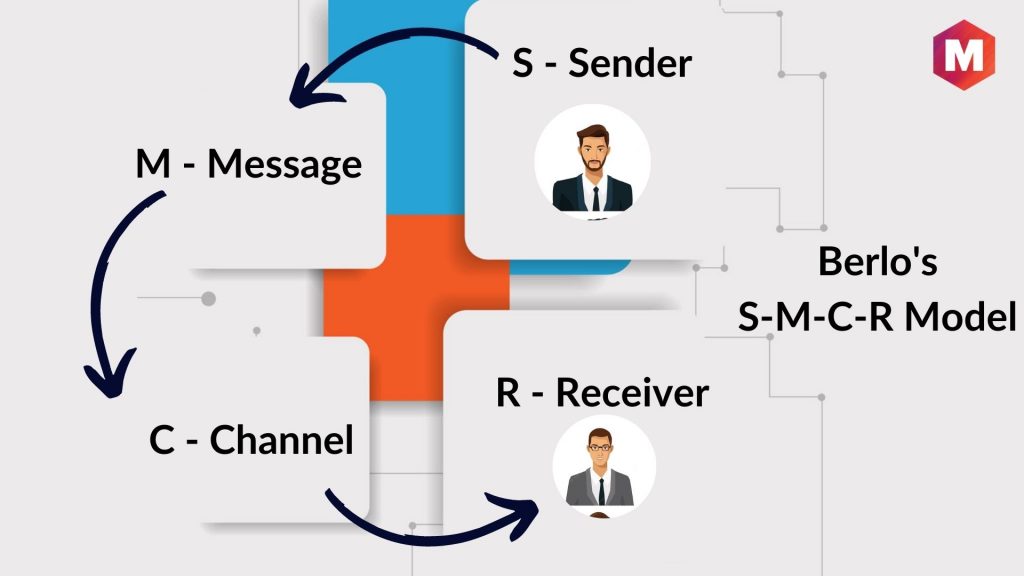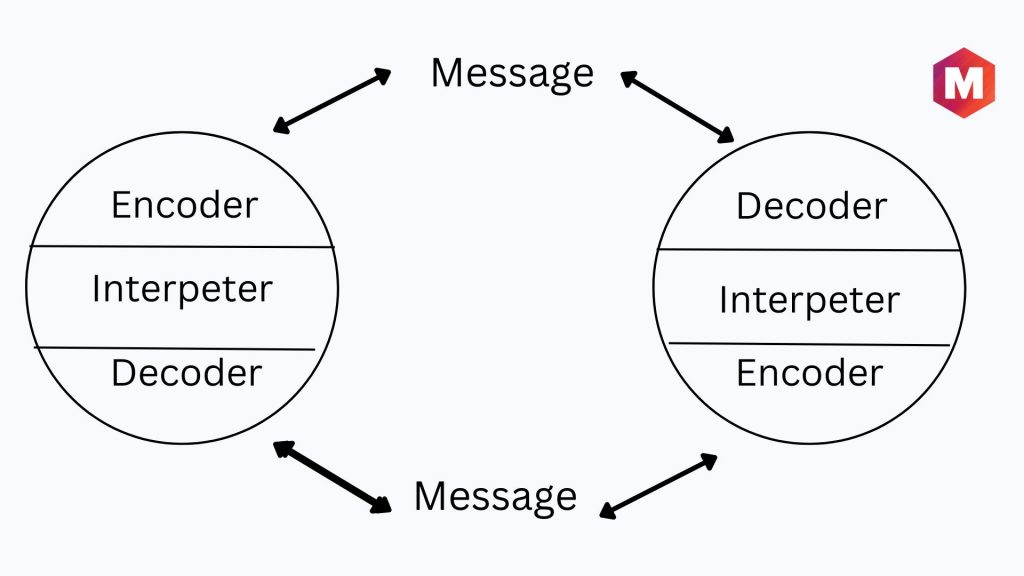Communication plays a significant role in the day-to-day life of humans. Similarly, the role of communication is crucial in the business world. If you want to survive in the business world, it is essential to communicate properly.
The primary purpose of communication is to deliver a piece of information from one party to another in its original form. Communication is considered successful only if the other party receives the meaning as intended by the sender.
With time, organizations have learned the importance of communication because communication doesn’t only take place within the organization but also outside the organization with the customers and stakeholders.
Therefore, the need to have a communication model that fulfills all requirements of the organization becomes essential. A communication model’s role is to simplify the complex process of communication and determine where and with whom the communication takes place.
Have you ever wondered about the practical tips to enhance your communication strategy?
For effective communication in business, consider implementing these practical tips to eliminate common barriers. Firstly, always tailor your message to the audience by understanding their needs and cultural context. According to a report by the Harvard Business Review, customizing communication increases engagement by up to 80%. Secondly, leveraging technology like CRM tools can streamline communication processes and ensure consistency across all channels.
Moreover, understanding and adapting to recent trends in communication can significantly boost effectiveness. The use of AI-driven chatbots in communication has skyrocketed, with a study from McKinsey & Company indicating a 30% increase in customer satisfaction rates when businesses integrate AI chatbots for customer interactions. Keeping updated with such trends not only enhances communication but provides a competitive edge in the market.
A communication model makes it easy to understand the communication process by representing the different aspects of the communication model in pictorial form. There are a total of 8 different communication styles or models that exist and are used by organizations. Each communication model explains the communication process in a different way.
The main communication models are divided into three main categories. This article will explain all the major models of basic framework significant models of communication in business.
The first category of the communication model is linear models. The four models that fall under this category are as follows.
Table of Contents
1. Linear model
The linear model of communication encounters is the most basic communication model. In this model, only three entities are involved in communication encounter. These entities are a sender, a message, and a receiver. However, the linear model emphasizes the sender and the message sent.
The receiver is also part of the communication model, but the role of the receiver is quite limited in earliest models. It is assumed that either the message is received by the receiver successfully or not. The linear model is further extended in other models. Let us learn about them one by one.
1.1 Aristotle’s Model
Aristotle’s model of communication is one of the oldest communication models. The Aristotle model was introduced back in 300 BC. This communication model mainly focused on two key elements of communication, i.e., speaker and speech.
The Aristotle model is a speaker centered model as it considers that the speaker plays a vital role in the communication process. It considers that the speaker plays an active role and is required to prepare a speech beforehand according to the target audience.
On the other hand, the receiver’s role is less critical as he plays a passive role in the communication process. The Aristotle model divides communication into five primary elements, such as a speaker, speech, occasion, audience, and effect.
According to this model, communication is a one-way process where the receiver plays a passive role. The acknowledgment from the receiver is not given any importance. Thus, this communication model is widely used for public speaking, where propaganda is prepared to convince the audience.
1.2 Lasswell’s Model
The next model in linear and communication theory is the Lasswell communication model or Lasswell model of communication. In this model, the communication is analyzed by asking five questions. These five questions are as follows:
- Who said?
- What was said?
- What channel was used to say it?
- To whom was it said?
- With which effect it was said?
Lasswell’s communication model was introduced in 1948 and is considered one of the most influential communication models in the whole communication studies world.
This model of communication is a straightforward communication model and is popular because of its scientific method of analyzing the communication process. Because of its simplicity, this method is one of the best communication models to teach about communication processes to students in their early stages of learning.
1.3 Shannon-Weaver’s Model
Shannon-weaver’s communication model is one of the most complex models of communication models that fall under the category of linear communication models. In the scientific world, this model of communication is given the utmost respect.
Because it was the first communication model that considered the impact of noise on communication.
The five main critical elements of these communication models are:
- Sender
- Encoder
- Channel
- Decoder
- Receiver
Shannon included the concept of the sender, message, transmitter, encoding, decoding, the channel of transmission, receiver, noise, etc. In his communication model, Shannon mentions that the message sent by the sender can be distorted because of the presence of noise in the channel.
In most basic forms, the examples of noise can be wrongly spelled messages in an email or text message, static in the a radio broadcast signal, or external noises while making a speech.
The Shannon weaver model is the first model of the linear communication model category that gave importance to the feedback from the receiver.
1.4 Berlo’s S-M-C-R Models of Communication
Berlo’s S-M-C-R model is the fourth and last communication model in the linear communication model category. This model of communication explains the communication process using four elements of the basic communication models, i.e.
- S – Sender
- M – Message
- C – Channel
- R – Receiver
This model emphasizes that the effectiveness of communication doesn’t only depend on the efficiency of the sender. But all the steps involved in the communication process impacts communication.
The four steps considered to improve communication is in the Berlo’s communication model and the factors involved in each step that can affect the communication process are as following:
A. Source or sender
Source or sender is the person who generated the message. The factors involved in this step that can impact the message in the communication process are the person’s communication skills, social system, culture, knowledge of the person, and the person’s attitude.
B. Message
The message is the information that the sender wants to send to the receiver. The factors in sending messages that can impact the outcome of communication are content, elements, code, and structure of the message.
C. Channel
Channel is the medium using which the information is conveyed. The factors involved in the channel that can impact the message can be touching, seeing, hearing, tasting, and smelling.
D. Receiver
The last step that takes place in Berlo’s communication model is the receiver. The receiver receives the message and decodes it based on his understanding and knowledge.
Therefore, the factors that can impact communication styles can be communication skills, culture, social background, knowledge, and attitude of the receiver.
The next category of communication models is the interactive models.
2. The interactive model of communication
The interactive models of communication is an advanced model than the linear models of communication. As the name of the communication model suggests, the communication process involves both sender and receiver. Unlike linear models of communication, feedback is sent to acknowledge the message received.
The role of the sender and receiver keeps on changing as the oldest communication model proceeds. Because communication takes place in both directions, communication in the interactive communication models is also known as a two-way communication process.
In this communication model, the focus is on the interaction between the sender and the receiver and not on the message sent or received.
Two models fall under the category of an interactive model of communication. Let us learn about them one by one.
2.1 Osgood-Schramm Model
The Osgood-Schramm model is the simplest communication model in the category of interactive models. It is also referred to as a circular model, which depicts that the message follows in both directions.
This model doesn’t differentiate between the sender and receiver in the communication process. Because in this model, both parties play the role of sender and receiver at different times in the communication process.
The Osgood-Schramm communication model works on four main principles. The principles are as follows:
- The communication involves three steps, such as coding, decoding, and interpreting.
- The communication takes place in a circular motion and not in a linear way.
- The communication takes place between two equal parties who reciprocate to each other’s messages.
- Interpretation of messages is essential.
This communication model is best for situations where communication takes place immediately. For example, in face-to-face communication, misunderstanding created because of the noise can be clarified immediately during the conversation.
Both parties involved in the communication perform the tasks of encoding, decoding, and interpreting while communicating.
2.2 The Westley and Maclean Model
The Westley and Maclean Model of communication gives importance to the feedback. According to this model, communication does not begin with when someone says something but communication practice starts with the feedback or response given by the participants.
This communication emphasizes that the communication highlights various cultural contexts and environmental factors profoundly impact communication. The way one conveys the message, and with the perspective, other people will receive it influences the communication.
The communication is shaped by the objects of orientations of the sender and receiver. The object of orientation of communication consists mostly of the culture, background, and beliefs of the person involved in the communication.
The Westley and Maclean model is applied in two contexts of communications, such as mass communication and interpersonal communication. In interpersonal communication, feedback is immediate and direct, whereas, in mass communication, feedback is indirect and slow.
3. The Transactional model of communication
The transactional models of communication is the most sophisticated model of communication out of all communication models. According to this model, communication is not merely an exchange of messages between the sender and receiver. It is a process that creates realities consisting of social, environmental and cultural factors, and relational factors.
This model suggests that we don’t just communicate merely to exchange messages but to create relationships and to establish communities.
There are two models that fall under the category of Transactional model of communication.
3.1 Barnlund’s transactional model
Barnlund’s transactional model is a dynamic or two-way communication model. This model explains basic interpersonal communication that takes solace between the sender and receiver. This model signifies that the sending and receiving of messages takes place simultaneously.
Barnlund’s transactional models defines communication skills as a continuous process where the sending and receiving of messages continuously occurs. The role of the sender and receiver keeps on changing very frequently, and both play an essential role in the communication process. The immediate feedback communication is given by one person will be a message for another person.
3.2 Dance’s Helical Model
The dance’s helical model of communication defines human communication itself as a cyclic process. It says that the communication that takes place between two people is influenced by time cultural context and experience.
That means initially, the communication starts as a cyclic process and later turns into a complex helical sphere. The helical nature or circular process of communication represents one way communication evolves with time.
The next cycle of communication is not the same as the previous cycle of communication. That means communication in one cycle differs from the same communication event that takes place in the next cycle and does not repeat itself correctly.
Conclusion
The process of communication is both simple and, at the same time, complex to explain. Communication can simply be considered as an exchange of messages between two people or a complicated process to establish understanding and build a community.
The above eight communication models are theoretical explanations circular models of communication. It is imperative to learn about all of these models of communication to understand the concept of communication.
Liked this post? Check out the complete series on Communication





Reference to this page
this is one of the best article i have read and i have made a series of references in my academic research presentation to your article. i would like to know is there other way in which one can present communication models in relation to how thy can overcome the communication barriers in business communication with reference to larger business entities like Microsoft, Tesla etc that operate in various countries